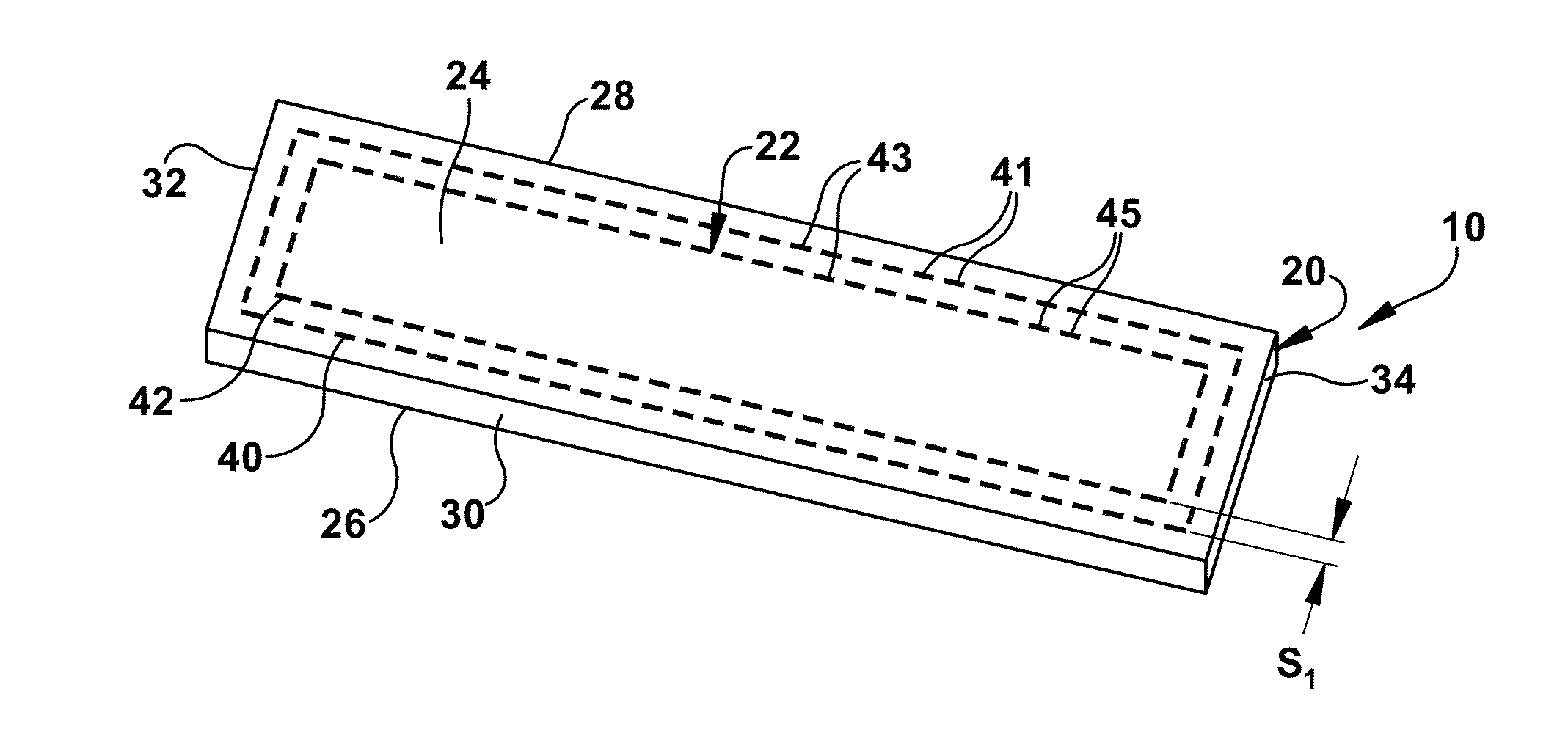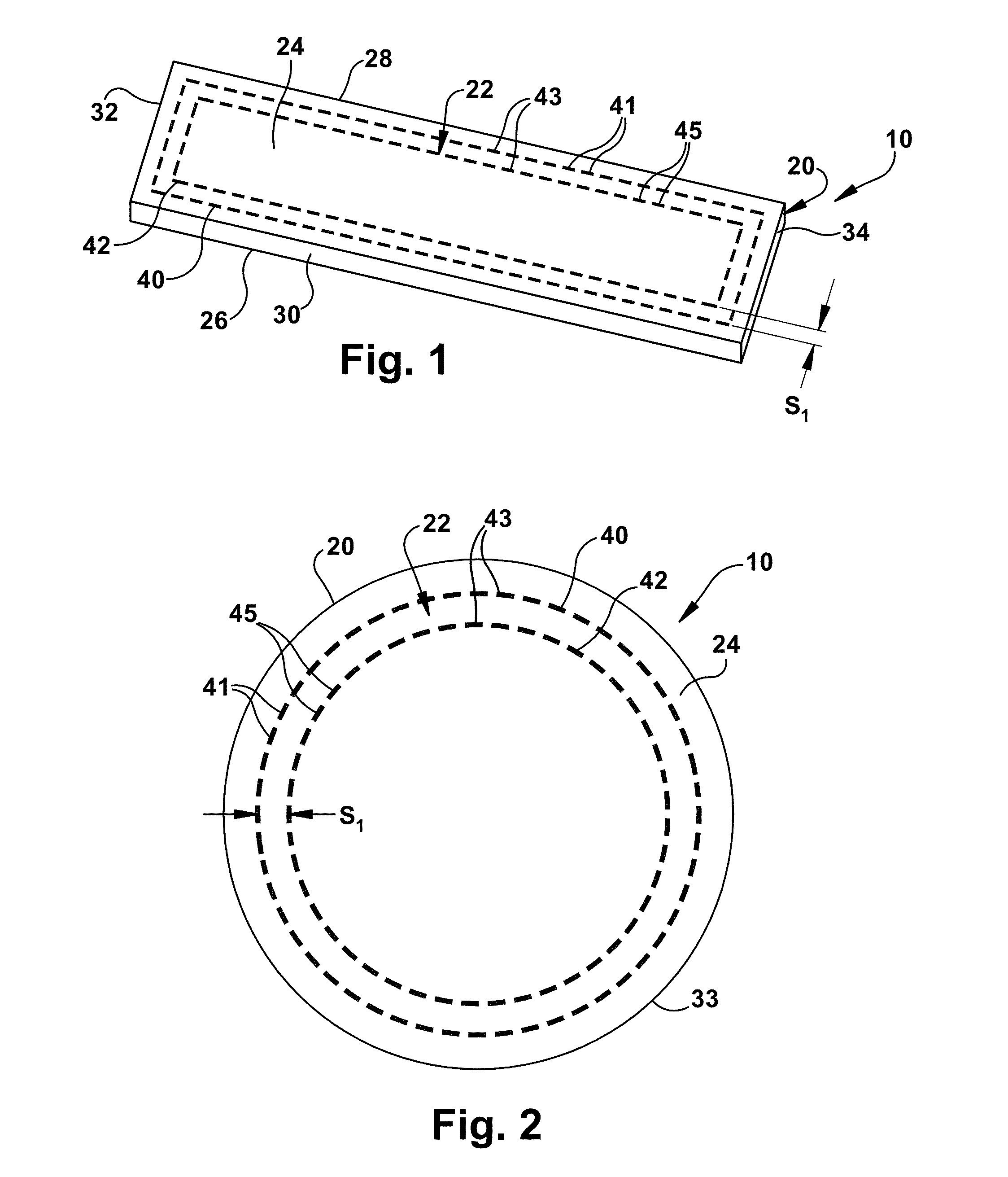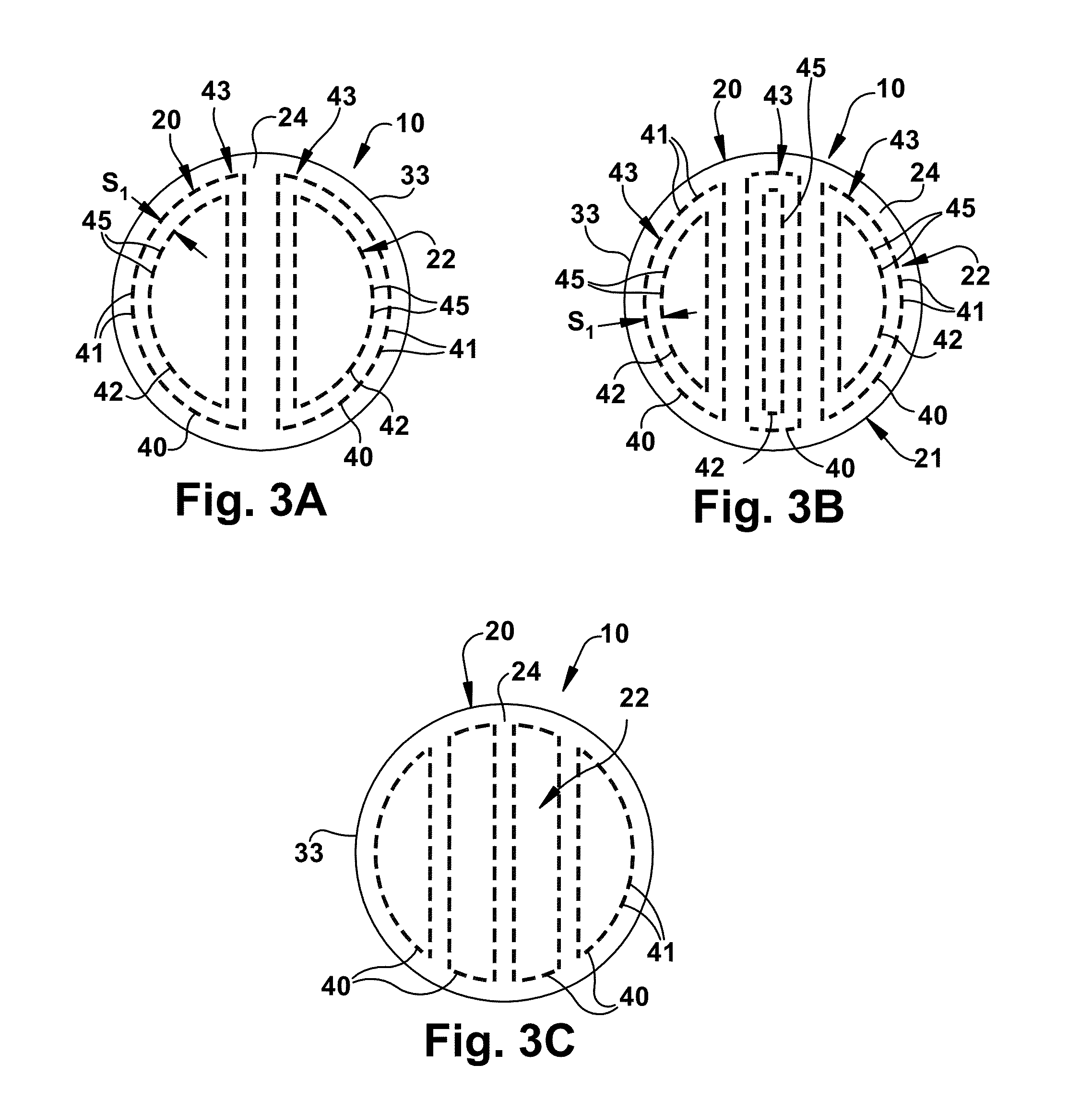Reinforced tissue graft
- Summary
- Abstract
- Description
- Claims
- Application Information
AI Technical Summary
Benefits of technology
Problems solved by technology
Method used
Image
Examples
example 1
[0079]In this example, two groups were investigated: Group I-Control—Native (unreinforced) fascia and Group II-Experimental—reinforced fascia. The fascia was reinforced using a biodegradable polymer braids as the reinforcing material. Polymer braids used were made of poly lactic acid (PLA) and poly glycolic acid (PGA). PLA and PGA are the most widely researched polymers in the field of tissue engineering. Since PGA degrades more rapidly than PLA, the present example uses polymer braids having PGA as a core and a combination of PLA / PGA as a sheath (FIG. 5A). Two tests were used to verify the efficacy of stitching as a method of reinforcement with polymer braids, namely, uniaxial tension test and multi directional loading using a modified Ball burst test.
[0080]All allograft human fascia lata were obtained from the Musculoskeletal Transplant Foundation in Edison, N.J. (donor age 18-55 years). All PGA and PLA braids used for reinforcing the fascia were obtained from Concordia Fibers, Co...
example 2
In Vitro Degradation Study
[0086]Fascia discs having a diameter of 4 cm were stitched along the periphery using PLA, PGA, and PE polymer braids (n=6 per group). Three specimens per group were allocated to time zero testing and three were subjected to in vitro degradation. For in vitro degradation, the specimens were put in individual beakers containing 100 mL of 1×PBS (pH=7.4) and immersed in a water bath maintained at 37° C.
[0087]The 1×PBS solution was checked every day for any signs of contamination and the solution was changed every other day so as to maintain a constant pH of 7.4 throughout the study. At the end of the 21 days the specimens were removed and sutured to a stainless steel ring in simple suture configuration at 1 cm intervals. The suture retention loads of the two groups, time zero and 21 days, were quantified using the modified ball burst test. Failure testing included 10 cycles of preconditioning form 5-15 N at 0.25 Hz followed by load to failure at 30 mm / min.
[0088...
example 3
Design Configurations
[0089]4×4 cm pieces of fascia were stitched using 2-0 commercial silk suture (Harvard Apparatus, Holliston, Mass.) using five stitch configurations: 1) peripheral double pass; 2) 2 rectangle double pass; 3) 3 rectangle double pass; 4) 4 rectangle double pass; and 5) rectangular cross-hatch. The samples were tested using the previously described modified ball burst test and a pseudo side constraint test. For the pseudo side constraint test, the sample was constrained to a stainless steel ring using simple suture configurations and was distracted in uniaxial tension to failure at 30 mm / min.
[0090]The results are illustrated in FIGS. 8-9. Using both test methods, the rectangular cross-hatch stitch pattern had the highest suture retention loads compared to other stitch configurations investigated. These data show that the rectangular cross-hatch stitch pattern will make the mechanical performance of fascia suitable for large to massive rotator cuff tendon repairs.
PUM
 Login to View More
Login to View More Abstract
Description
Claims
Application Information
 Login to View More
Login to View More - R&D
- Intellectual Property
- Life Sciences
- Materials
- Tech Scout
- Unparalleled Data Quality
- Higher Quality Content
- 60% Fewer Hallucinations
Browse by: Latest US Patents, China's latest patents, Technical Efficacy Thesaurus, Application Domain, Technology Topic, Popular Technical Reports.
© 2025 PatSnap. All rights reserved.Legal|Privacy policy|Modern Slavery Act Transparency Statement|Sitemap|About US| Contact US: help@patsnap.com



